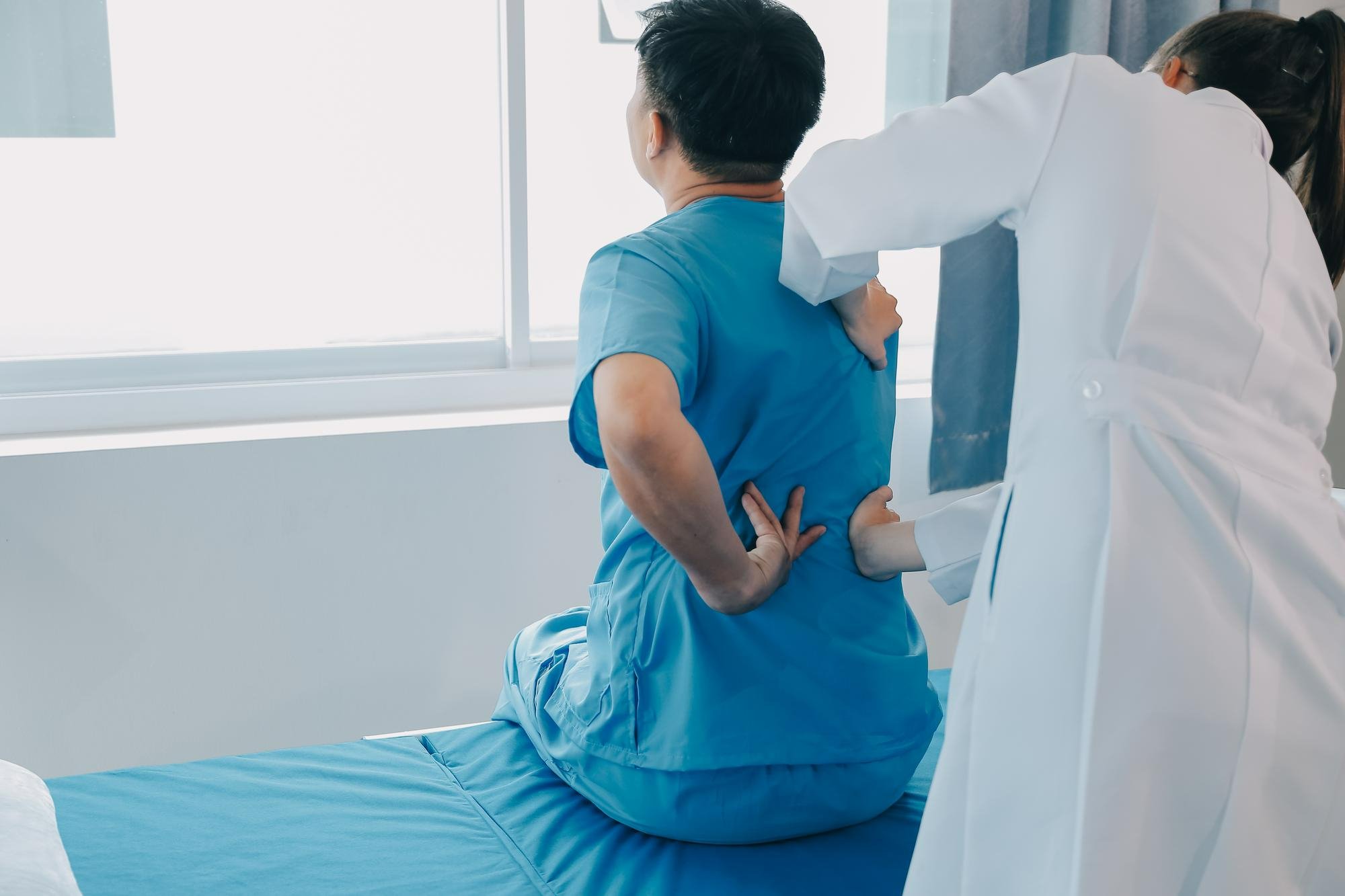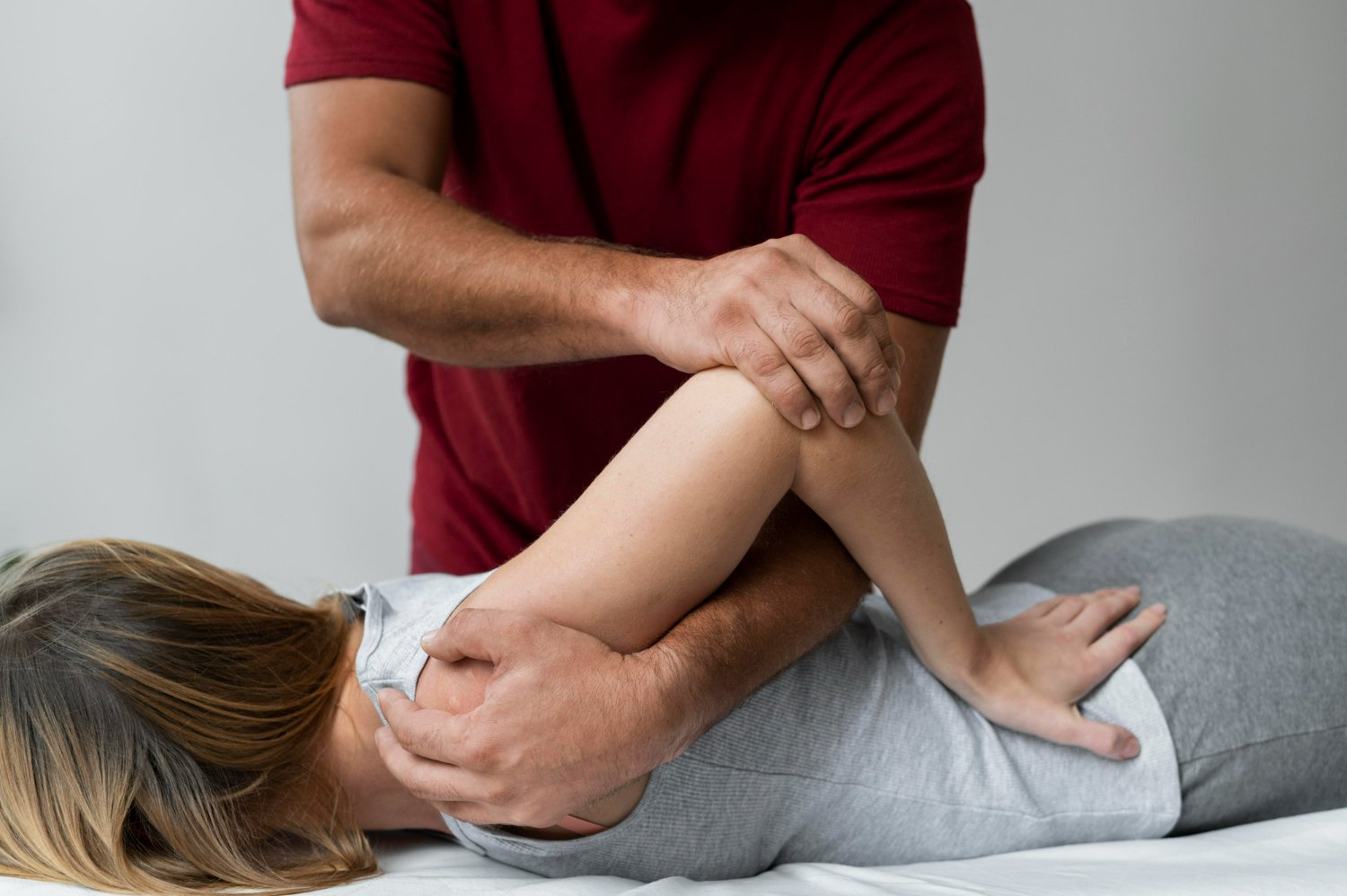Lower back pain is a prevalent ailment that affects millions of adults worldwide, making it one of the most common reasons for medical consultations and a leading cause of disability. Whether it stems from poor posture, occupational hazards, or the natural aging process, the impact on daily life can be significant. This pain limits physical activity and impairs mood and productivity, creating a pressing need for effective management strategies.
Enter chiropractic care, a non-invasive solution that has been steadily gaining acclaim for its effectiveness in managing and alleviating this pervasive issue. What will a chiropractor do for lower back pain? Chiropractors offer a unique approach centred on diagnosing, treating, and preventing mechanical disorders of the musculoskeletal system, particularly the spine. Their methods are grounded in the principle that proper alignment of the body’s musculoskeletal structure, particularly the spine, will enable the body to heal without surgery or medication.
Chiropractic care for back issues focuses on providing immediate back pain relief and educating patients to prevent future episodes. Through spinal adjustments, physical therapy, and tailored lifestyle recommendations, chiropractors strive to enhance spinal mobility and improve overall well-being. What will a chiropractor do for lower back pain goes beyond simple treatment; it’s about fostering a healthier, pain-free lifestyle. This introduction sets the stage for a deeper exploration of how chiropractic lower back treatments can be a transformative experience for those suffering from chronic or acute back pain.

Decoding Lower Back Pain: Causes and Consequences
Lower back pain, a complex and multifaceted condition, affects an estimated 80% of adults at some point in their lives. Its causes are as varied as the individuals it impacts, ranging from acute injuries to chronic degenerative disorders. What will a chiropractor do for lower back pain? Understanding this common ailment’s root causes and implications is the first step towards effective management and relief.
Common Causes of Lower Back Pain
- Poor Posture: In today’s digital age, where many hours are spent in front of computers, poor posture is a prevalent cause of lower back pain. Slouching or hunching over a desk can strain the muscles and put excess pressure on the spine, leading to discomfort and spinal misalignments.
- Injury: Sudden impacts, such as those from sports, accidents, or improper lifting techniques, can cause acute injuries that result in immediate back pain. These injuries often involve sprains (ligament damage), strains (muscle or tendon damage), or herniated discs.
- Overuse: Repetitive activities at work or home can lead to overuse injuries, where the continuous strain on the back gradually builds up and causes pain. This is commonly seen in occupations that require lifting, bending, or long periods of standing.
- Degenerative Conditions: As we age, natural wear and tear on the spine can lead to osteoarthritis, spinal stenosis, and degenerative disc disease. These chronic conditions progressively impair the spine’s function and integrity, leading to persistent pain.
The Impact of Lower Back Pain on Quality of Life
Lower back pain does more than just hurt; it can profoundly impact quality of life. The discomfort can deter individuals from engaging in physical activities, leading to decreased fitness levels and a sedentary lifestyle, which only exacerbates the problem. Additionally, chronic back pain can impair sleep quality, affect mood and mental health, and reduce one’s ability to perform daily tasks effectively.
Chiropractic lower back care provides back pain relief and a pathway to restoring a person’s quality of life. By addressing the mechanical issues in the spine, chiropractic care back treatments can significantly reduce pain and improve mobility. What will a chiropractor do for lower back pain? A back pain chiropractor will tailor spinal adjustment techniques, chiro back adjustment, and lower back therapy to manage and mitigate pain effectively.
Moreover, chiropractic back relief extends beyond physical adjustments; it involves educating patients on maintaining optimal back health through exercise, ergonomics, and lifestyle modifications. DFW back pain sufferers, like those in many regions, have access to comprehensive chiropractic pain management strategies that not only focus on alleviating pain but also on preventing its recurrence.
What will a chiropractor do for lower back pain? They provide a holistic approach to treatment that integrates chiropractic spinal therapy, advice on posture, and techniques for managing back pain, aiming to enhance overall wellbeing and prevent future issues. This proactive approach ensures that individuals can manage their discomfort and fortify their backs against potential future challenges.
First Contact: What to Expect on Your Initial Visit to a Chiropractor

When you first visit a chiropractor for lower back pain, understanding what a chiropractor will do for lower back pain is crucial to setting realistic expectations and easing any apprehensions. The initial consultation is a comprehensive approach that involves patient history intake, a detailed physical examination, and, often, diagnostic tests to assess your condition thoroughly.
Initial Consultation and Patient History
Your journey to relief begins when you enter the chiropractor’s office. The chiropractor will first conduct a detailed interview to understand your medical history and the specific nature of your lower back pain. What will a chiropractor do for lower back pain starts with asking about the onset of the pain, its intensity, duration, and any actions that alleviate or exacerbate it. This detailed history is crucial as it guides the potential causes and the unique approach needed for your chiropractic lower back treatment.
Physical Examination
After gathering your history, the chiropractor will perform a comprehensive physical examination. This includes assessing your spinal alignment, posture, and physical condition, particularly on the spine and lower back. The examination often involves a range of motion tests and might also test your muscle strength, reflexes, and nerve function to pinpoint areas of discomfort or dysfunction. This thorough physical assessment helps to clarify further what a chiropractor will do for lower back pain in terms of diagnostic accuracy and subsequent treatment.
Diagnostic Tests
Depending on the findings from the physical examination, the chiropractor may recommend diagnostic imaging tests such as X-rays or MRI scans. These tests help rule out more serious conditions and provide a clear picture of any structural abnormalities in the spine that could be causing your pain. Understanding these aspects is vital in forming an effective chiropractic back relief strategy.
Formulating a Treatment Plan
With a comprehensive understanding of your condition, the chiropractor will formulate a personalized treatment plan to address your specific needs. What will a chiropractor do for lower back pain here involves outlining the expected course of treatment, which may include spinal adjustment back, chiro back adjustment, lower back therapy, and other chiropractic spinal therapy techniques.
The goal of this plan is not just to provide back pain relief, but also to enhance spinal function and support overall health, thereby managing and mitigating lower back pain over the long term.
Hands-On Healing: Chiropractic Techniques for Easing Lower Back Pain
Chiropractic care offers a variety of hands-on techniques that are fundamental in treating lower back pain. These methods aim to alleviate pain, enhance mobility, and promote overall healing. Understanding what will a chiropractor do for lower back pain involves exploring the specific techniques like spinal manipulation, mobilization, and the flexion-distraction technique, which are staples in chiropractic therapy.
Spinal Manipulation: The Core of Chiropractic Care
Spinal manipulation, or chiropractic adjustment, is a technique where chiropractors use their hands or a small instrument to apply a controlled, sudden force to a spinal joint. The goal of this procedure is to improve spinal motion and improve the body’s physical function. This is a cornerstone chiropractor treatment method and is especially effective in treating lower back pain. By realigning the spine and reducing pressure on the nervous system, spinal manipulation can relieve back pain and help manage back pain effectively.
Mobilization: Enhancing Movement and Flexibility
Mobilization involves low-velocity movements and stretching of muscles and joints to increase the range of motion within those areas. What will a chiropractor do for lower back pain often includes this technique, especially for patients who require a gentler approach. Mobilization allows for more fluid movement and less stiffness, contributing to chiropractic back relief and enhancing the patient’s overall mobility.
Flexion-Distraction Technique: A Gentle Approach to Pain Relief
The flexion-distraction technique is particularly effective for patients suffering from disc herniations or other spinal conditions that cause lower back pain. This method uses a special table that stretches the spine, which can help to isolate the affected area while slightly “distracting” (or pulling apart) the vertebrae. The motion and pressure applied can reduce pressure from a herniated disc, allowing it to return to its normal position and lessen the irritation on the nerves, thereby offering back pain relief.
How These Techniques Promote Healing
Chiropractors use these techniques to reduce pain and restore and enhance joint function, ultimately leading to improved strength, balance, and mobility. What will a chiropractor do for lower back pain extends beyond simple treatment; it involves a holistic approach to ensure that improvements are sustained over time. Patients can achieve long-lasting chiropractic back relief through regular adjustments and the integration of chiropractic care back practices into daily life.

Beyond Adjustments: Comprehensive Chiropractic Care
While spinal adjustments are at the heart of what chiropractors do, comprehensive chiropractic care encompasses much more. What will a chiropractor do for lower back pain goes beyond mere manual adjustments to include a variety of supplementary therapies and holistic approaches. These methods aim to alleviate pain, address the root causes of back issues, and promote overall health and well-being.
Integrative Therapies Enhancing Chiropractic Outcomes
- Massage Therapy: Often integrated into chiropractic sessions, massage therapy works by relaxing tense muscles, improving blood flow, and reducing pain. This therapy complements chiropractic spinal therapy by addressing soft tissue injuries and enhancing healing. For those suffering from DFW back pain, incorporating massage can provide deep relief and aid in faster recovery.
- Ultrasound Therapy: Utilized by many chiropractors, ultrasound therapy involves using sound waves to penetrate deep into tissue, creating a gentle heat that enhances circulation and helps to reduce swelling, stiffness, and pain. This method is particularly beneficial for lower back therapy, facilitating the healing of soft tissues and joints.
- Electrical Muscle Stimulation (EMS): EMS uses a low-level electrical current to stimulate muscle contraction, helping to manage inflammation, prevent muscle atrophy, and alleviate pain. When considering what will a chiropractor do for lower back pain, EMS is a valuable tool for enhancing muscle recovery and providing back pain relief.
Holistic Approach to Chiropractic Care
Chiropractic care extends well beyond physical treatments, incorporating holistic strategies that consider the entire person. What will a chiropractor do for lower back pain includes a comprehensive approach to patient wellness, focusing on:
- Lifestyle Guidance: Chiropractors often advise on lifestyle changes that can help manage and prevent lower back pain. This may include ergonomic adjustments at work, proper lifting techniques, and the importance of regular physical activity.
- Nutritional Counseling: Nutrition plays a crucial role in healing and health. Many chiropractors advise on diet to support tissue repair and overall health. Anti-inflammatory foods, for example, can significantly reduce the incidence and severity of back pain.
- Stress Management: Stress can exacerbate back pain and impede the healing process. Chiropractors may teach relaxation techniques, recommend yoga or meditation, and offer strategies for managing stress effectively.

The Road to Recovery: What to Expect During the Healing Process
Understanding what will a chiropractor do for lower back pain is crucial for patients embarking on their recovery journey. Chiropractic care provides a personalized roadmap to recovery, focusing on alleviating pain and correcting underlying issues. The timeline and experiences during this process can vary based on the individual’s condition, but some common milestones and strategies enhance healing.
Recovery Timeline Under Chiropractic Care
The recovery process typically begins with frequent visits to a lower back chiropractor during the initial weeks. Patients may experience immediate relief after the first few sessions, although for some, it might take a bit longer to notice improvements. As the spinal adjustment back and chiro back adjustment techniques begin to realign the spine and reduce pressure on the nerves, patients will gradually start to feel a decrease in pain and an increase in mobility.
Enhancing Recovery with Home Care Techniques
Chiropractic spinal therapy doesn’t end at the clinic. What will a chiropractor do for lower back pain also involves guiding patients on how to care for their backs at home:
- Exercises: Simple, targeted exercises are often prescribed to strengthen the muscles surrounding the spine, improve flexibility, and support the adjustments made during sessions. These exercises help consolidate the gains from treatment and prevent future episodes of back pain.
- Posture Adjustments: Learning and maintaining proper posture is crucial for the healing process. Chiropractors provide tips on how to sit, stand, and sleep properly to avoid unnecessary strain on the lower back.
- Lifestyle Modifications: Depending on the root cause of the back pain, chiropractors may suggest lifestyle changes such as weight management, nutritional advice, and activity modifications to support a healthy back.
A Stronger Back for a Brighter Tomorrow
Chiropractic care offers a comprehensive approach to treating lower back pain, addressing the symptoms and the underlying causes of discomfort. By integrating hands-on chiropractic treatment back techniques with personalized recovery plans, chiropractors help patients relieve their pain and fortify their backs against future problems.
Considering chiropractic care can be a transformative decision for those struggling with DFW back pain or similar issues. What will a chiropractor do for lower back pain? More than just making adjustments, they provide the tools and teachings necessary to foster a healthier, more active lifestyle free from pain. Embracing chiropractic care could be your first step towards a stronger, pain-free back and a brighter, more active tomorrow.






